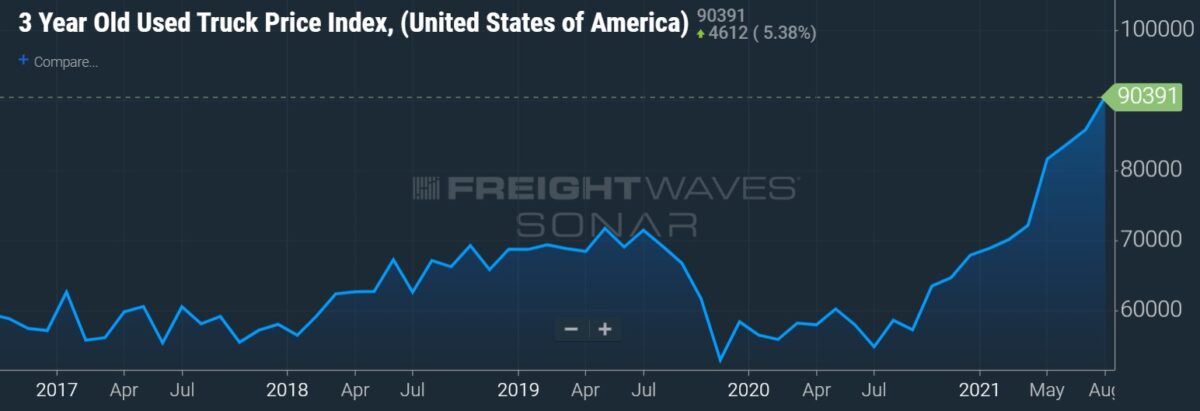Truckload carrier Heartland Express recorded its best operating ratio Thursday since it began acquiring other carriers in 2013. The third-quarter result was a 75% adjusted OR, 650 basis points better year-over-year and 470 bps better than the second quarter.
The North Liberty, Iowa-based carrier expects the current freight market to continue moving forward.
“Freight demand has continued to be strong and has reached unprecedented levels throughout the third quarter of 2021 and we expect these trends to continue for the remainder of 2021 and well into 2022,” stated CEO Mike Gerdin in the press release.
He did caution that labor headwinds remain a challenge throughout the industry.
“We also believe that hiring and retention of employees has reached levels of unprecedented challenge across our industry for both carriers and shippers,” Gerdin continued. “We believe that this shared challenge of hiring and retaining both drivers and other supply chain critical employees will continue in the year ahead.”
Heartland Express (NASDAQ: HTLD) has implemented multiple wage increases over the last 12 months to address hiring and retention issues. The company’s salaries, wages and benefits expense line increased 170 bps year-over-year as a percentage of revenue (excluding fuel) during the third quarter.
The quarter was notably impacted by gains on sale again.
Gains on the sale of revenue equipment, booked as an offset to operating expenses, were $9.5 million higher year-over-year at $15.3 million. The gains were also nearly double the amount recorded during the second quarter. In comparison to gains booked during the second quarter, the incremental gains in the third quarter resulted in 480 bps of OR improvement and roughly 7 cents per share in earnings.
The run-up in equipment values is related to severe deceleration in tractor and trailer build rates at the original equipment manufacturers, which are struggling with semiconductor and parts shortages. The dearth of new equipment has resulted in higher asset values in the secondary markets.

Heartland Express doesn’t provide color on the mix of the gains or the number of units sold, which likely swayed the line item. The majority of its tractor trades are locked in through fixed price agreements with the OEMs, which can minimize volatility.
Some investors discount the quality of an earnings report when outsized gains are booked. However, analysts who follow the space give carriers full credit, both good and bad, as the gains and losses are a recurring line item and part of a carrier’s normal equipment replacement schedule.

Third-quarter revenue, excluding fuel surcharges, declined 10.1% year-over-year to $133 million. The carrier does not provide any operating metrics around utilization and pricing.
Heartland Express’ fleet operated at a mid-70% OR during the quarter, with the previously acquired Millis fleet operating in the upper-80% range. The press release said Millis is still on track to achieve the three-year OR target of 85% or better.
Fuel was a headwind in the period, as prices increased sequentially during most weeks of the quarter, up 350 bps year-over-year as a percentage of revenue.
Earnings per share of 31 cents were 2 cents ahead of analysts’ expectations for the third quarter and 6 cents ahead of the year-ago period.
The company ended the quarter with $180 million in cash, a 58% increase since the end of 2020, as it generated $96 million in net cash from operations. Heartland Express has also used cash to fund the payment of a 50 cent special dividend ($40 million) and to repurchase more than $30 million in outstanding stock this year.
The average age of Heartland Express’ tractor fleet was 1.7 years at the quarter’s close, compared to 2 years in the same quarter a year ago.







